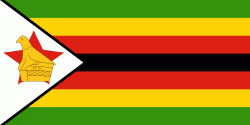Gutu (Gutu District)
It was home to the late Oliver Munyaradzi, Simon Muzenda, former vice president of Zimbabwe as well as Vitalis Zvinavashe, a Commander of the Zimbabwe Defence Forces and politician. Dr Costa Maonei, former District Medical Officer, comes from the southern tip of the District. The late Air Vice Marshal Josiah Tungamirai was also a native of Gutu. Gutu Mission Hospital found in the district, is one of a number of centers for HIV/AIDS treatment in the province. The population is mostly the Karanga, a Shona sub-tribe. It is one of a few districts in the province where the standard of living is above average. Gutu Rural District council is in charge of the day-to-day running of the district.
Climatically, the area falls under Natural Region III. Natural Regions (NRs) in Zimbabwe's context are areas delineated on the basis of soil type, rainfall and other climatic factors. It is one of a few districts in the country that suffers from over-population. Its population density of 22.08 per square kilometer is among the highest in the country. Gutu district center had a population of 10-12000 in 1989. Like other districts in the country, medical facilities in the district suffer from shortage of manpower.
Mpandawana Growth Point, a famous business center in Zimbabwe, is found in the district.
Map - Gutu (Gutu District)
Map
Country - Zimbabwe
 |
 |
| Flag of Zimbabwe | |
The British South Africa Company of Cecil Rhodes demarcated the Rhodesia region in 1890 when they conquered Mashonaland and later in 1893 Matabeleland after a fierce resistance by Matabele people known as the First Matabele War. Company rule ended in 1923 with the establishment of Southern Rhodesia as a self-governing British colony. In 1965, the white minority government unilaterally declared independence as Rhodesia. The state endured international isolation and a 15-year guerrilla war with black nationalist forces; this culminated in a peace agreement that established universal enfranchisement and de jure sovereignty as Zimbabwe in April 1980. Zimbabwe then joined the Commonwealth of Nations, from which it was suspended in 2002 for breaches of international law by its government under Robert Mugabe and from which it withdrew in December 2003.
Currency / Language
| ISO | Currency | Symbol | Significant figures |
|---|---|---|---|
| ZWL | Zimbabwean dollar | 2 |
| ISO | Language |
|---|---|
| SN | Shona language |















